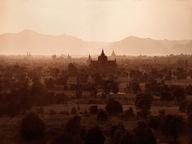Quiz Answer Key and Fun Facts
1. After the British took power over Burma in 1886, where did they move the capital?
2. The British were able to maintain a relatively stable colonial rule in Burma, allowing a large degree of autonomy through incremental granting of the ingredients of self-rule. By 1937, Burma had its own cabinet and was on the verge of achieving independence. Unfortunately, World War 2 came suddenly upon the Burmese in 1941 via a Japanese invasion. During the war, the British and Americans were able to supply China with supplies and military goods via the 'Burma Road'. This road stretched from the northern Burmese town of Lashio to which Southwestern Chinese city?
3. Which politician is celebrated as the founding father of Burma despite his never having lived to see its formulation as a modern state?
4. On January 4th, 1948, independence was achieved for Burma. Who became the first prime minister of this newly formed state?
5. Very soon after independence, several ethnic minority groups within the country began agitating for their own independence, claiming justifiably that they had not been properly included or represented in the formulation of the new government. Which of these was not a key ethnic group responsible for insurgence in Burma?
6. The insurgencies of the various and under-represented ethnic minority groups led to destabilization of the Burmese government during the 1950s. In an attempt to regain control, the army moved in on March 2, 1962 and took power in a military coup. This coup was led by what general of the Burmese army?
7. In the early 1960s, a Burmese citizen became the Secretary-General of the United Nations. Who was he?
8. By the late 1980s, military rule had become tiresome for the Burmese people who were suffering from the negative economic effects of Ne Win's 'Burmese Road to Socialism'. New waves of protest led to great violence and repression by the government. Thousands were killed in several incidents during which fateful year of the late 1980s?
9. Among the many problems that faced the various political leaders that have come and gone since the late 1980s is the drug trade. Burma is the leading producer of Opium, with over 60 percent of the world's supply arising from this small Southeast Asian country. Much of the opium is grown in which area of Northern Burma?
10. Another 'problem' facing the leaders of Burma's military regime during the 1990s was the growing democratic rights movement. Which Nobel Prize winning daughter of a former Burmese politician became the figurehead of this movement?
Source: Author
thejazzkickazz
This quiz was reviewed by FunTrivia editor
gtho4 before going online.
Any errors found in FunTrivia content are routinely corrected through our feedback system.
